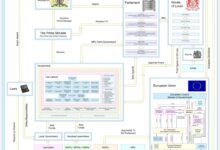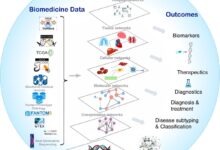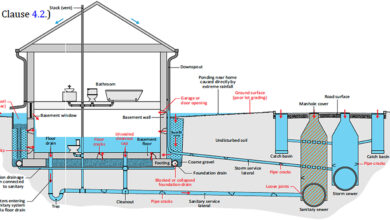System Development: 7 Powerful Steps to Master the Process
Ever wondered how complex software systems come to life? It all starts with system development—a structured journey from idea to execution that powers everything from mobile apps to enterprise platforms. Let’s dive into the process, step by step.
What Is System Development and Why It Matters

System development is the backbone of modern technology. It refers to the process of creating, designing, deploying, and maintaining information systems that meet specific user needs. Whether it’s a simple inventory tracker or a global banking platform, every digital solution begins with a well-thought-out system development strategy.
Defining System Development
At its core, system development involves a series of phases aimed at building functional, scalable, and secure software systems. These phases ensure that the final product aligns with business goals and user expectations. According to the Computer Hope glossary, system development is “a process by which a new system is conceived, designed, implemented, and maintained.”
- Involves planning, analysis, design, implementation, and maintenance
- Applies to both software and hardware integration
- Used across industries: healthcare, finance, education, logistics
Key Objectives of System Development
The primary goal of system development is to deliver a reliable, efficient, and user-friendly system. But beyond functionality, it also aims to:
- Improve operational efficiency
- Reduce manual errors and redundancies
- Support data-driven decision-making
- Ensure scalability and future-proofing
“A well-executed system development lifecycle can reduce project failure rates by up to 40%.” — Project Management Institute (PMI)
The 7 Phases of System Development Lifecycle (SDLC)
One of the most proven frameworks in system development is the System Development Life Cycle (SDLC). This model breaks the entire process into seven distinct, manageable phases. Each phase builds on the previous one, ensuring clarity, control, and quality throughout the project.
1. Requirement Gathering and Analysis
This is the foundation of any successful system development project. During this phase, stakeholders—including clients, end-users, and developers—collaborate to define what the system should do.
- Conduct interviews, surveys, and workshops
- Identify functional and non-functional requirements
- Create a Software Requirements Specification (SRS) document
Tools like JIRA, Trello, or Confluence are often used to organize and track requirements. Missing or unclear requirements at this stage are a leading cause of project delays and cost overruns.
2. Feasibility Study
Before investing time and money, organizations must determine whether the proposed system is technically, economically, and operationally feasible.
- Technical Feasibility: Can we build it with current technology?
- Economic Feasibility: Will the benefits outweigh the costs?
- Operational Feasibility: Will users adopt and use it effectively?
A feasibility report helps decision-makers approve, modify, or reject the project. This step prevents wasted resources on unrealistic ideas.
3. System Design
Once requirements are approved, the design phase begins. This is where architects and developers create a blueprint for the system.
- Define system architecture (front-end, back-end, database)
- Select programming languages, frameworks, and tools
- Design user interfaces and data models
Design documents are shared with stakeholders for feedback. Tools like UML (Unified Modeling Language) and ER diagrams help visualize the structure. For more on system design best practices, check out GeeksforGeeks’ guide on software design principles.
4. Implementation (Coding)
This is where the actual system development happens. Developers write code based on the design specifications.
- Break the system into modules or components
- Use version control systems like Git
- Follow coding standards and best practices
Agile teams often work in sprints, delivering small, functional pieces of the system regularly. Continuous integration tools like Jenkins or GitHub Actions automate testing and deployment.
5. Testing
No system development is complete without rigorous testing. This phase ensures the system works as intended and is free of critical bugs.
- Unit testing: individual components
- Integration testing: how modules interact
- System testing: full system validation
- User Acceptance Testing (UAT): real users test the system
Automated testing frameworks like Selenium, JUnit, or Cypress help speed up the process. Testing is not a one-time event—it’s an ongoing activity throughout development.
6. Deployment
After successful testing, the system is ready to go live. Deployment can be done in several ways:
- Big Bang: Full rollout at once
- Phased: Roll out module by module
- Parallel: Old and new systems run together temporarily
Deployment strategies depend on risk tolerance and system complexity. Cloud platforms like AWS, Azure, or Google Cloud simplify deployment with scalable infrastructure.
7. Maintenance and Evaluation
System development doesn’t end at launch. Most systems require ongoing maintenance to fix bugs, improve performance, and adapt to new requirements.
- Corrective maintenance: fixing issues
- Adaptive maintenance: updating for new environments
- Perfective maintenance: enhancing features
- Preventive maintenance: avoiding future problems
Regular evaluation ensures the system continues to meet business needs. Feedback loops are essential for long-term success.
Popular System Development Methodologies
Different projects require different approaches. The choice of methodology can make or break a system development effort. Let’s explore the most widely used ones.
Waterfall Model
The Waterfall model is one of the oldest and most structured approaches to system development. It follows a linear sequence: each phase must be completed before the next begins.
- Clear, easy-to-manage stages
- Suitable for projects with well-defined requirements
- Poor flexibility for changes once the project starts
While criticized for being rigid, the Waterfall model is still used in industries like aerospace and defense where documentation and compliance are critical.
Agile Methodology
Agile is the most popular system development approach today. It emphasizes flexibility, collaboration, and customer feedback.
- Work is divided into short iterations (sprints)
- Regular reviews and adjustments
- High customer involvement throughout the process
Frameworks like Scrum and Kanban fall under the Agile umbrella. According to the State of Agile Report, over 70% of organizations use Agile to improve delivery speed and responsiveness.
DevOps Integration
DevOps is not a methodology per se, but a cultural and technical shift that combines development (Dev) and operations (Ops) to accelerate system development and deployment.
- Automates testing, integration, and deployment
- Enables continuous delivery (CD) and continuous integration (CI)
- Improves collaboration between teams
Companies like Netflix and Amazon rely on DevOps to deploy updates thousands of times a day. It’s a game-changer in modern system development.
Key Roles in System Development Teams
No system development project succeeds without the right team. Each member brings unique skills to the table, ensuring the project runs smoothly from concept to completion.
Project Manager
The project manager is the conductor of the orchestra. They oversee timelines, budgets, resources, and communication.
- Creates project plans and tracks progress
- Manages risks and resolves conflicts
- Acts as the main point of contact for stakeholders
Certifications like PMP (Project Management Professional) or Scrum Master are highly valued in this role.
Systems Analyst
The systems analyst bridges the gap between business needs and technical solutions. They translate user requirements into technical specifications.
- Conducts requirement analysis
- Recommends system improvements
- Works closely with developers and users
This role requires strong analytical and communication skills, as well as a deep understanding of both business processes and IT.
Software Developers and Engineers
These are the builders—the ones who write the code and bring the system to life.
- Front-end developers: focus on user interface
- Back-end developers: handle server, database, and logic
- Full-stack developers: work on both sides
They use languages like Python, Java, JavaScript, or C#, depending on the project. Collaboration tools like GitHub and Slack keep them connected.
Tools and Technologies in System Development
Modern system development relies on a vast ecosystem of tools that enhance productivity, collaboration, and quality.
Integrated Development Environments (IDEs)
IDEs are software applications that provide comprehensive facilities for developers.
- Visual Studio Code: lightweight, extensible, supports multiple languages
- IntelliJ IDEA: popular for Java development
- PyCharm: ideal for Python projects
These tools offer code completion, debugging, and version control integration, making coding faster and more accurate.
Version Control Systems
Version control is essential for tracking changes and collaborating on code.
- Git is the most widely used system
- Platforms like GitHub, GitLab, and Bitbucket host repositories
- Enables branching, merging, and code reviews
Without version control, managing large-scale system development would be chaotic and error-prone.
Testing and Automation Tools
Automated testing tools help ensure software quality and reduce manual effort.
- Selenium: for web application testing
- Jest: for JavaScript unit testing
- Postman: for API testing
Continuous integration tools like Jenkins or CircleCI run tests automatically whenever new code is pushed.
Challenges in System Development
Despite advances in tools and methodologies, system development is not without its challenges. Understanding these hurdles is key to overcoming them.
Changing Requirements
One of the biggest challenges is scope creep—when users request new features mid-project.
- Can delay timelines and increase costs
- Requires flexible methodologies like Agile
- Needs clear change management processes
Regular communication and documentation help manage expectations and minimize disruptions.
Poor Communication
Miscommunication between developers, stakeholders, and users can lead to incorrect assumptions and flawed systems.
- Use collaborative tools (Slack, Microsoft Teams)
- Hold regular stand-up meetings
- Document decisions and requirements clearly
Transparency is crucial for alignment across teams.
Security and Compliance Risks
With rising cyber threats, security must be built into the system from the start.
- Follow secure coding practices
- Conduct regular security audits
- Comply with regulations like GDPR, HIPAA, or PCI-DSS
Ignoring security can lead to data breaches, legal penalties, and loss of trust. For best practices, refer to OWASP’s Top 10 Security Risks.
Best Practices for Successful System Development
To maximize the chances of success, teams should follow proven best practices throughout the system development lifecycle.
Start with Clear Goals
Define what success looks like from the beginning. Use SMART goals (Specific, Measurable, Achievable, Relevant, Time-bound) to guide the project.
- What problem are we solving?
- Who are the users?
- What metrics will we use to measure success?
Clear goals keep the team focused and aligned.
Involve Users Early and Often
User feedback is invaluable. Conduct usability testing and gather input throughout development.
- Create prototypes and wireframes for early feedback
- Run beta tests with real users
- Iterate based on user suggestions
Systems built without user input often fail to meet real-world needs.
Document Everything
Comprehensive documentation is often overlooked but is critical for maintenance and onboarding.
- Code comments and README files
- System architecture diagrams
- User manuals and training guides
Good documentation saves time and reduces errors in the long run.
Future Trends in System Development
The field of system development is constantly evolving. Emerging technologies and methodologies are reshaping how systems are built and deployed.
Artificial Intelligence and Automation
AI is being used to automate coding tasks, detect bugs, and even generate code snippets.
- GitHub Copilot uses AI to suggest code in real time
- AI-powered testing tools predict failure points
- Low-code platforms use AI to speed up development
While AI won’t replace developers, it will augment their capabilities and increase productivity.
Cloud-Native Development
More organizations are adopting cloud-native approaches, building systems specifically for cloud environments.
- Uses microservices architecture
- Leverages containers (Docker) and orchestration (Kubernetes)
- Enables scalability, resilience, and faster deployment
Cloud-native development is becoming the standard for modern applications.
Low-Code and No-Code Platforms
These platforms allow non-developers to create applications using visual interfaces.
- Tools like OutSystems, Mendix, and Bubble
- Speed up development for simple to medium-complexity systems
- Free up developers for more complex tasks
While not a replacement for traditional coding, they democratize system development and reduce time-to-market.
What is system development?
System development is the process of creating, implementing, and maintaining software systems to meet specific user or business needs. It involves stages like planning, design, coding, testing, deployment, and maintenance.
What are the main phases of system development?
The main phases are: 1) Requirement Gathering, 2) Feasibility Study, 3) System Design, 4) Implementation, 5) Testing, 6) Deployment, and 7) Maintenance. Together, they form the System Development Life Cycle (SDLC).
Which methodology is best for system development?
There’s no one-size-fits-all answer. Agile is best for dynamic projects with changing requirements, while Waterfall suits projects with fixed scopes. DevOps is ideal for continuous delivery and integration.
How long does system development take?
It varies widely—from a few weeks for small apps to several years for large enterprise systems. Factors include project complexity, team size, methodology, and stakeholder involvement.
Why is testing important in system development?
Testing ensures the system works correctly, is secure, and meets user requirements. It helps catch bugs early, reduces risks, and improves overall quality before deployment.
System development is a dynamic and essential process that powers the digital world. From defining requirements to maintaining live systems, each phase plays a critical role in delivering value. By following structured methodologies, leveraging the right tools, and embracing best practices, teams can build robust, scalable, and user-friendly systems. As technology evolves, so too will the ways we develop systems—making this field more exciting than ever.
Further Reading:









